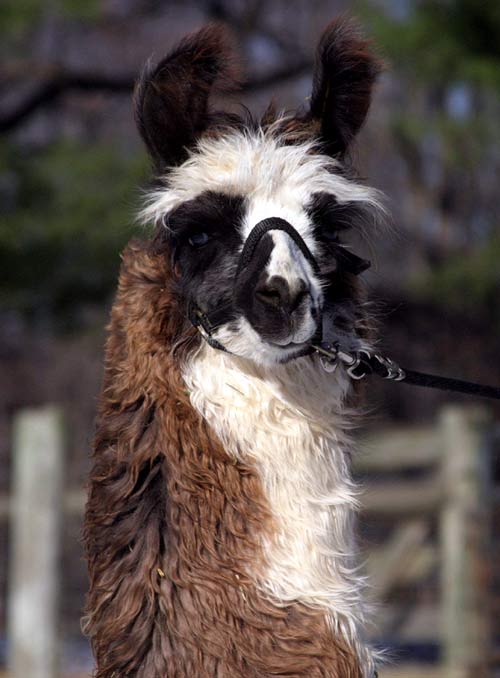Llamas do well on grass pasture, although a fescue grass may contain an endophyte that can contribute to abortions and should be avoided if possible. Good quality grass hay can supplement pasture, and be used for the bulk of winter feeding. The hay should be ideally 10% to 12% protein of maintenance of adult llamas. Alfalfa in large quantities should be avoided; it generally has too high a protein content, can contribute to obesity, cause urine scald, and can upset the calcium/phosphorous balance in the blood.Most breeders provide a llama supplement, or llama chow, containing vitamins and minerals. This is usually given at the rate of about one pound per day per llama. Several commercial mixtures are available, and can usually be obtained from your local feed mill.
Loose salt is also provided free choice. Commercial mixes and salt blocks designed for other livestock are not formulated for llamas; they may contain minerals and contaminants not appropriate and even harmful to llamas. For example, your locale may be deficient in selenium. However, too much selenium is also harmful. Consult with your veterinarian on a source of salt designed for llamas in your area.

